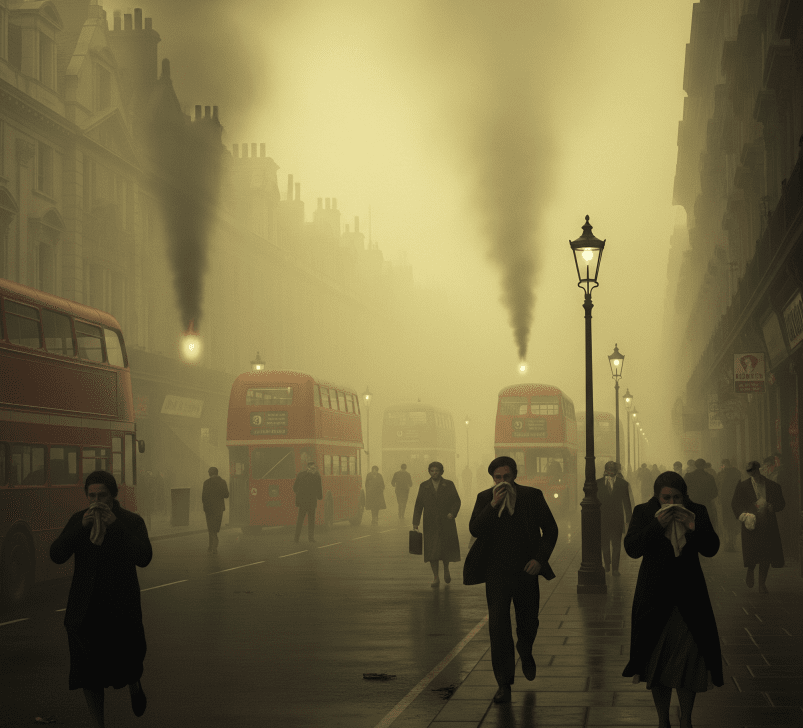
Newsletter Subscribe
Enter your email address below and subscribe to our newsletter

Enter your email address below and subscribe to our newsletter

In December 1952, London was suffocated by a toxic haze so thick that it blotted out the sun, paralyzed the city, and killed thousands in a matter of days. The Great Smog was not an ordinary weather event but a man-made disaster, a lethal combination of industrial pollution, coal burning, and freak atmospheric conditions. Its legacy would reshape environmental policy worldwide, proving that air pollution was not just a nuisance—it was a silent killer.
The catastrophe began with an anticyclone, a high-pressure weather system that settled over London in early December. This created a temperature inversion, where a layer of warm air trapped cold, stagnant air near the ground. Normally, wind and rain would disperse pollution, but under this suffocating blanket, the city’s emissions had nowhere to go.
London at the time relied heavily on cheap, sulfur-laden coal for heating homes, powering factories, and generating electricity. As temperatures dropped, more coal was burned, pumping vast quantities of smoke, sulfur dioxide, carbon monoxide, and acidic particulates into the air. The result was a thick, yellowish-black smog—so dense that visibility dropped to just a few feet.
For five days, from December 5th to 9th, London was plunged into an eerie twilight. The smog seeped everywhere—into homes, theaters, and hospitals—forcing people to breathe air that burned their lungs and stung their eyes. Public transport collapsed as drivers abandoned their cars and buses crawled blindly through the streets. Pedestrians groped along walls or followed the sound of footsteps to avoid getting lost.
But the real horror was the invisible toll on human life. The smog’s toxic particles formed sulfuric acid in the lungs, leading to asphyxiation, pneumonia, and heart failure. The elderly, children, and those with respiratory illnesses suffered most. Initial reports estimated 4,000 deaths, but later studies revealed the true toll was closer to 12,000, as many died from complications in the following months. Even livestock at Smithfield Market perished, their lungs destroyed by the same poison choking the city.
The sheer scale of death forced Britain to confront its pollution problem. Before 1952, London’s infamous “pea-soupers” were seen as an unpleasant but inevitable part of urban life. The Great Smog shattered that complacency, proving that dirty air was a public health emergency.
Public outrage led to the Clean Air Act of 1956, a landmark law that:
The Great Smog was a turning point in environmental history, showing that industrial progress without regulation could be deadly. Today, London’s air is cleaner, but cities like Delhi, Beijing, and Lahore now face similar crises with PM2.5 pollution, proving that the lessons of 1952 remain urgent.
The disaster stands as a stark reminder: when governments ignore pollution, people pay with their lives. It transformed environmental policy, proving that clean air is not a luxury—it’s a basic human right. Would similar reforms be possible today, or have we forgotten the cost of inaction?